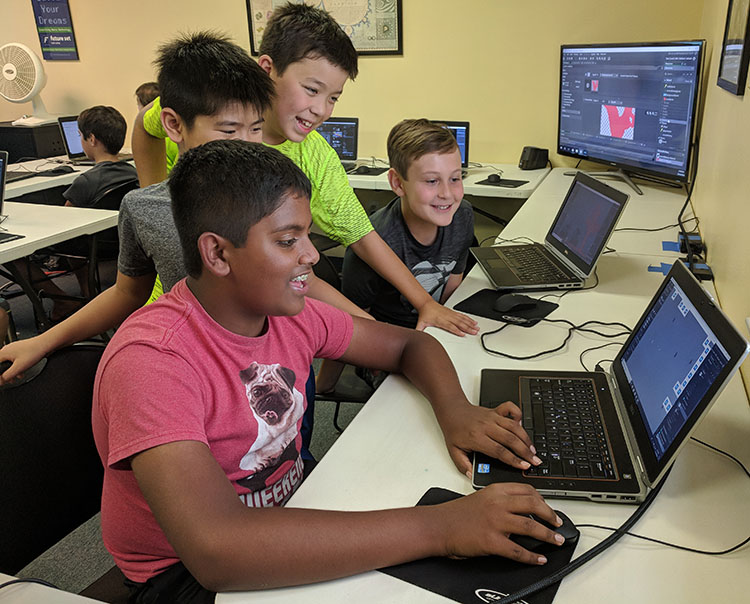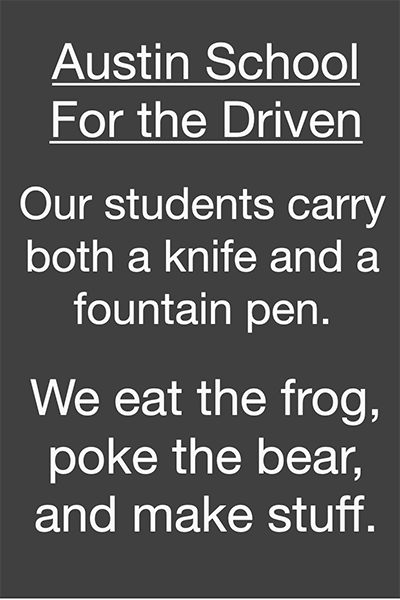Puppetry with objects unlocks the imagination and opens the mind
/
Guest contributor Caroline Reck is the founder and artistic director of the award-winning Glass Half Full Theatre, which has created some of the most creative, educational, and emotionally moving theater productions I’ve experienced in Austin (or anywhere). I can’t wait to see their latest work, Cenicienta: A Bilingual Cinderella Story, and you’ll understand why whey you read Caroline’s inspiring post below.
A few weeks ago, my young daughter and I were lying on my bed, reading a story. I wanted her to nap. She wanted to talk to me about the patches in our ceiling plaster, where a leak in the roof had caused some discoloration and peeling sections. I always avoided looking at those patches, a reminder that despite having our roof repaired, I had yet to chip away the plaster and repaint the ceiling. But Clementine saw something else. Unaware of my angst about those patches, she told me, “Mama, I love your ceiling! It’s so beautiful. There’s a mama fish, and a baby fish, and that one’s a bear. They’re taking care of each other, in case the bear isn’t a friendly bear . . . oh, no, it’s OK . . . the bear is smiling. . . .”
I was reminded, once again, of how important imagination is in creating a sense of positivity, of possibility, of aspirational thought. I shouldn’t have to be reminded. I’m the founder and artistic director of Glass Half Full Theatre, an Austin company, where my job is dreaming up ways to help audiences look at life in imaginative and optimistic ways, through puppetry and other live theater forms.
But it is so easy to let the everyday drudgery pull you down, make you forget your natural imaginative urges, and I see it happening to kids at younger and younger ages. Many factors contribute to children using their imaginations less often: screen time supplying ready-made images and predictable stories, exhaustion from long hours at school and aftercare, overscheduling of overly structured activities. As an educator, artist, and mama, I’m always looking for ways to promote imagination in children’s lives, and I particularly like to do bilingual work, so it’s accessible to kids whether English or Spanish is the language they are most confident in.
I wrote a play that was originally produced in 2015 at ZACH Theatre, in collaboration with Teatro Vivo, and is currently touring to schools in the Greater Austin area. It’s called Cenicienta: A Bilingual Cinderella Story and features the character of Belinda, a young girl banished by her uncaring stepfamily to the basement. Undeterred, Belinda befriends the objects around her, inventing characters with her unbridled imagination.
The show opens with Belinda giving voice(s) and movement to a two-headed desk lamp. Kids in the audience lean in. They’ve never seen this before. They are intrigued. They want to figure out what’s happening. Sometimes audiences of children will talk aloud at this point: “What’s she doing? How is she doing that?” but they quickly settle into a fascinated silence as the lamp characters (Gustavo and Ernesto) set up the backstory.
Belinda is stuck in the basement, preparing for a party that’s happening upstairs later on. She begins to recount the story of Cinderella, using a napkin with a napkin ring for Cinderella, an upside-down teapot for the Fairy Godmother, and a set of kitchen funnels for the stepfamily. She (and we) notice the parallels between the story of Cenicienta and Belinda’s own life, but it takes the duration of the show, and the unexpected opportunity to meet her hero, real-life poet Gary Soto, who’s upstairs at the party, for Belinda to gain the confidence to recognize her own self-worth in the world outside her imagination.
We’ve been touring this show to Austin-area campuses for the past year. I sit near the audience in the auditorium to run the sound cues, so I get to experience their youthful reaction to unbridled imagination being validated onstage. Their eyes get brighter. Their focus is intense, different from the glazed look children get when they are watching digital content. They are watching and listening, piecing together the story. Teachers and parents report to me that after the show, their kids start making up stories using brooms and straws and other objects they find around them. Kids who don’t speak Spanish experience the unique opportunity to follow along with the parts that are in Spanish, without being left out, because the action provides the links to understand what’s happening onstage. Tapping into their imaginations improves their ability to approach ideas with an open mind.
I still haven’t fixed the ceiling in my bedroom, but I also don’t avoid looking at it anymore. After all, my daughter finds it beautiful. She peers into the constellation of peeling drywall and sees a family of fish taking care of one another. I see the blooming artistry in her eyes, and I can’t remember why I disliked those patches in the first place.
Cenicienta: A Bilingual Cinderella Story, by Caroline Reck and Rupert Reyes, is being presented at the Sin Fronteras Festival at UT Austin January 23–24, 2019, and is currently available to tour to schools in the greater Austin area. For information on the Sin Fronteras festival, visit here. For information on bringing Cenicienta to your school, please visit here.
Caroline Reck



















